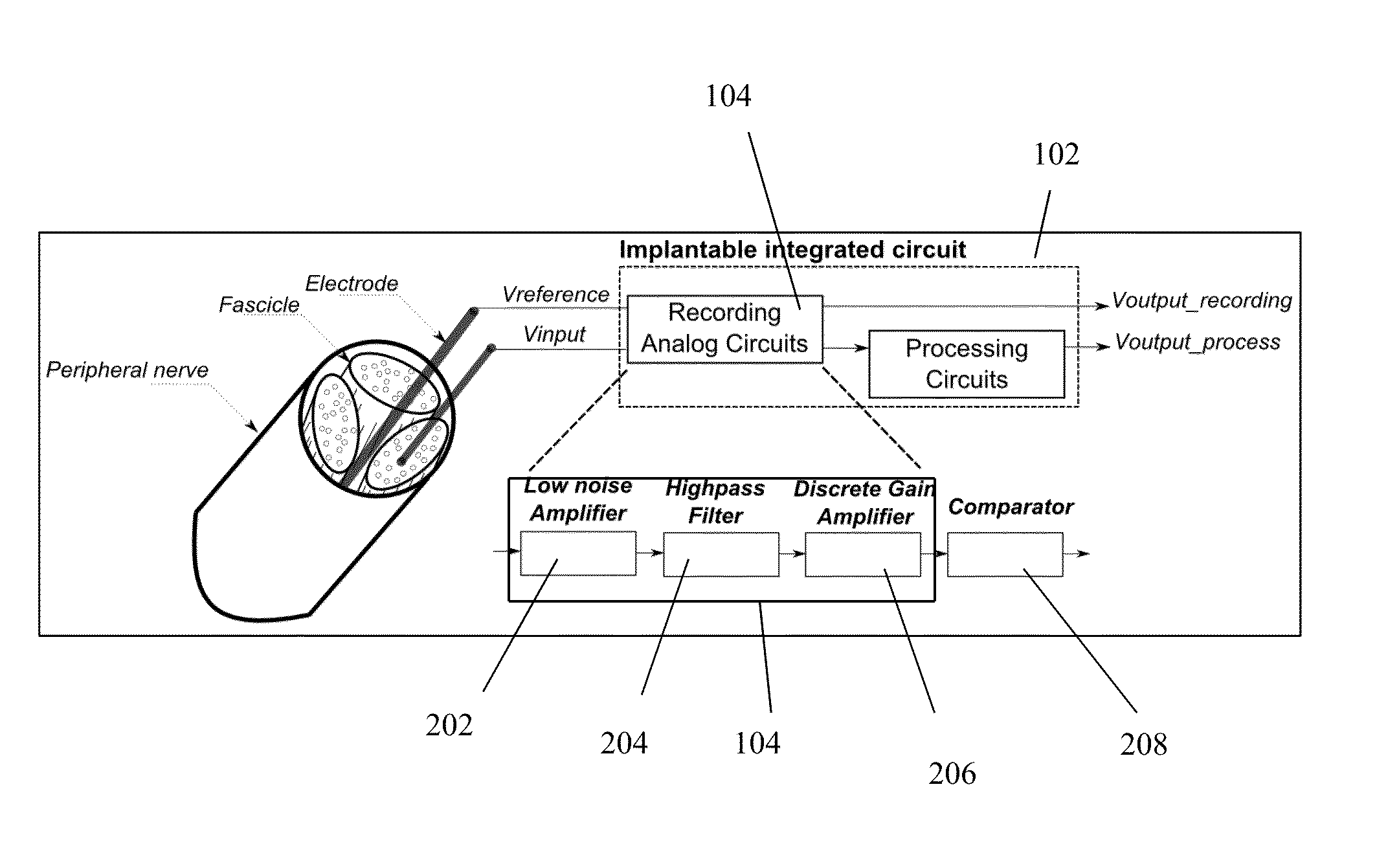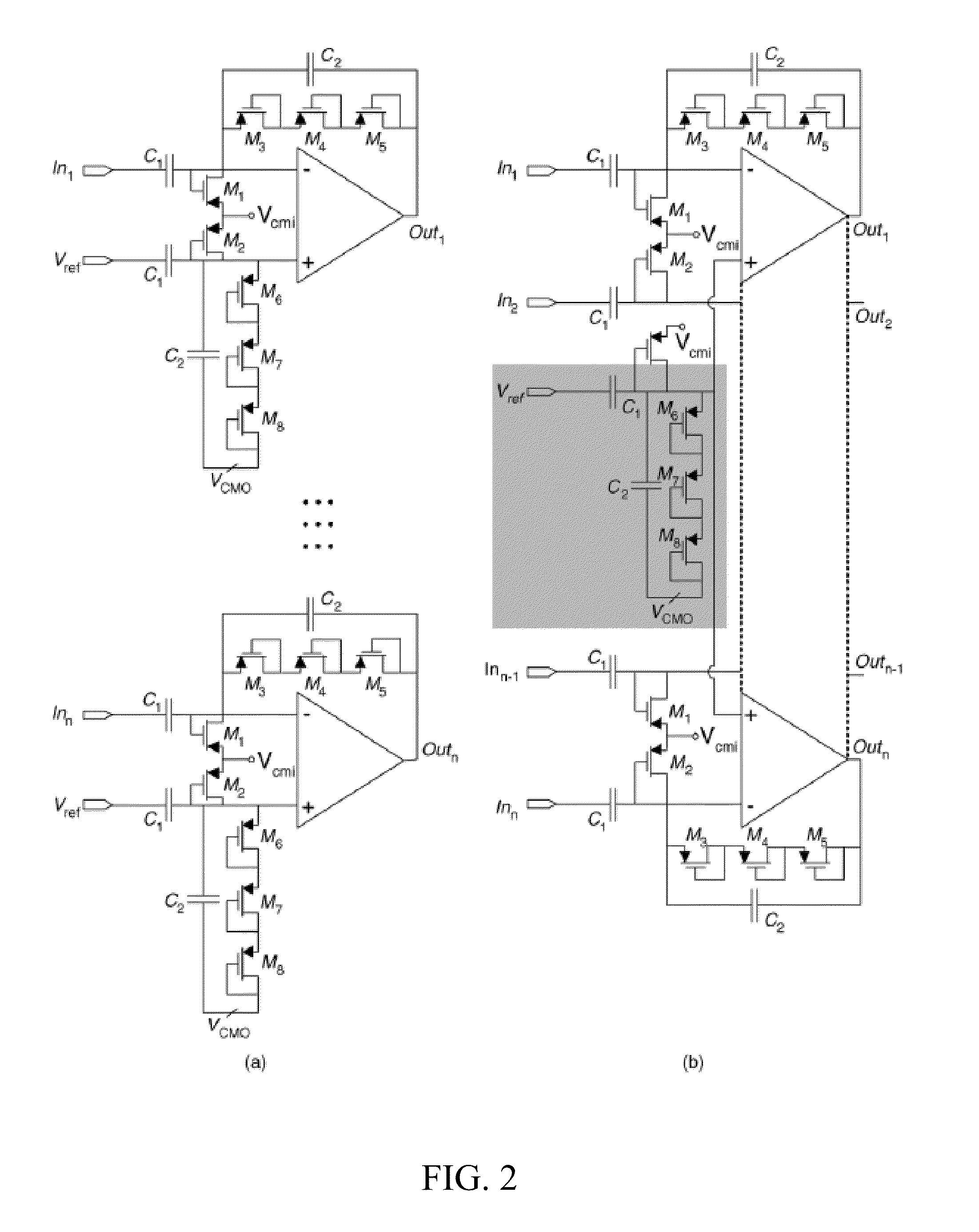Low noise analog electronic circuit design for recording peripheral nerve activity
- Summary
- Abstract
- Description
- Claims
- Application Information
AI Technical Summary
Benefits of technology
Problems solved by technology
Method used
Image
Examples
embodiment 1
[0088]A circuit, comprising a low noise amplifier, wherein the low noise amplifier comprises an operational transconductance amplifier (OTA) having at least two differential input series-connected transistors (SCT).
embodiment 2
[0089]The circuit according to embodiment 1, wherein the low noise amplifier is configured such that: the area per channel of the low noise amplifier is no more than 0.10 mm2; the power consumption per channel of the low noise amplifier is no more than 200 μW; and the input-referred voltage noise density of the low noise amplifier is no more than 50 nV / (Hz1 / 2) on 100 Hz-4 kHz bandwidth and no more than 30 nV / (Hz1 / 2) on the main white Gaussian noise contribution over the full bandwidth.
embodiment 3
[0090]The circuit according to embodiment 1, wherein the low noise amplifier is configured such that: the area per channel of the low noise amplifier is no more than 0.05 mm2; the power consumption per channel of the low noise amplifier is no more than 20 μW; and the input-referred voltage noise density of the low noise amplifier is no more than 50 nV / (Hz1 / 2) on 100 Hz-4 kHz bandwidth and no more than 30 nV / (Hz1 / 2) on the main white Gaussian noise contribution over the full bandwidth.
PUM
 Login to View More
Login to View More Abstract
Description
Claims
Application Information
 Login to View More
Login to View More - R&D
- Intellectual Property
- Life Sciences
- Materials
- Tech Scout
- Unparalleled Data Quality
- Higher Quality Content
- 60% Fewer Hallucinations
Browse by: Latest US Patents, China's latest patents, Technical Efficacy Thesaurus, Application Domain, Technology Topic, Popular Technical Reports.
© 2025 PatSnap. All rights reserved.Legal|Privacy policy|Modern Slavery Act Transparency Statement|Sitemap|About US| Contact US: help@patsnap.com



